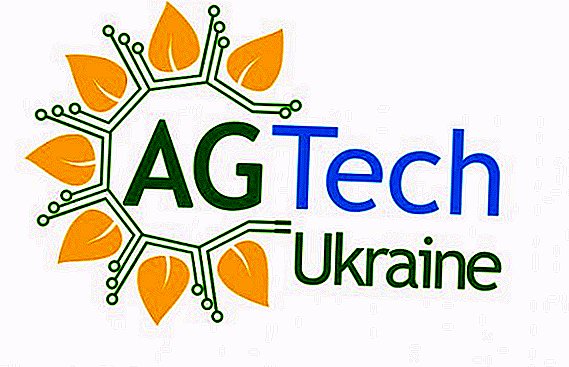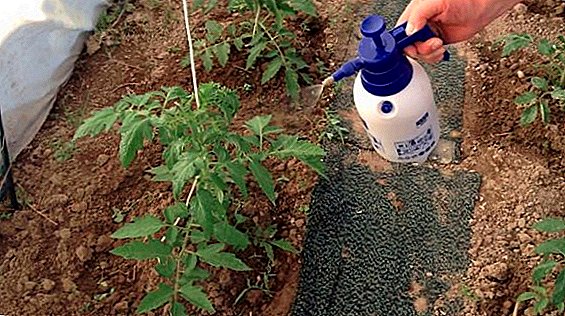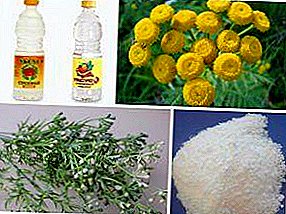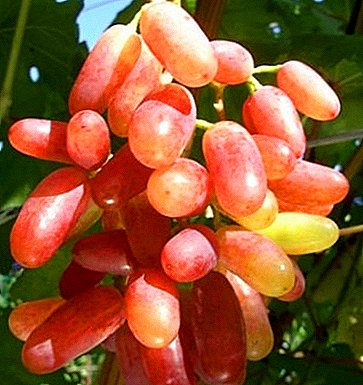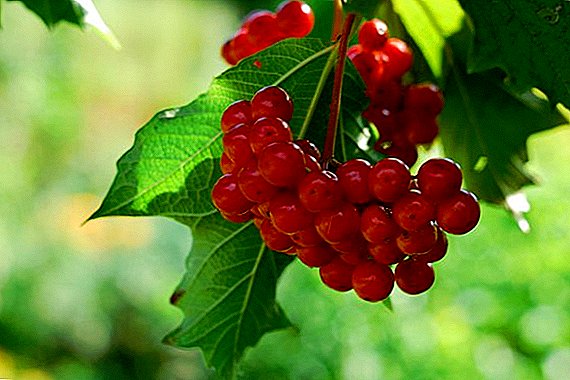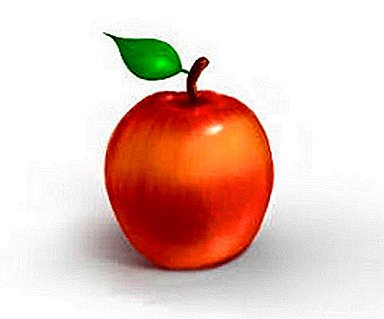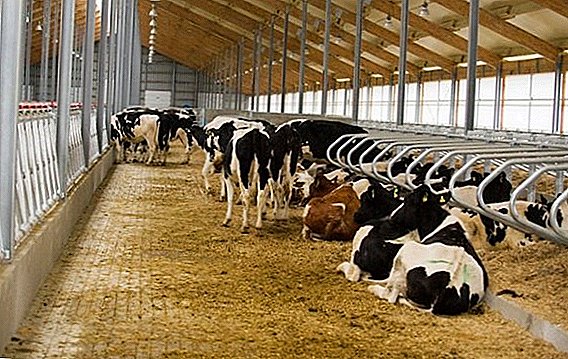 Today, modern farming technologies are becoming increasingly popular in various industries. No exception is animal husbandry, in particular the care of highly productive breeds of cattle. The technology of free housing for cows is one of the most common steps to optimize cattle breeding. However, many, both small and large livestock farms, do not always successfully implement such a system. As a result, animals not only get a lot of stress, but also lose their productivity. In this article we will look in detail at the basic principles of free keeping cows, as well as define the features of the organization of the system in modern conditions.
Today, modern farming technologies are becoming increasingly popular in various industries. No exception is animal husbandry, in particular the care of highly productive breeds of cattle. The technology of free housing for cows is one of the most common steps to optimize cattle breeding. However, many, both small and large livestock farms, do not always successfully implement such a system. As a result, animals not only get a lot of stress, but also lose their productivity. In this article we will look in detail at the basic principles of free keeping cows, as well as define the features of the organization of the system in modern conditions.
Advantages and disadvantages of free content
Despite the high efficiency and a lot of positives, few people resort to the free keeping of livestock. Among farmers there are a number of stereotypes that directly affect the spread of technology.  Therefore, before choosing this system of keeping cows you need to get acquainted not only with the main difficulties, but also with the main advantages.
Therefore, before choosing this system of keeping cows you need to get acquainted not only with the main difficulties, but also with the main advantages.
Did you know? The method of cows free stalls was first used massively in the late 60s - early 70s of the 20th century. in the United States and the USSR.
The main advantages of free housing cattle:
- increases the productivity of farm workers;
- reduces the cost of animal care;
- allows you to automate all the work;
- cows do not require grazing on vast areas;
- the system allows you to increase the productivity of animals at times;
- animals require a minimum number of personnel to care;
- with free movement of livestock daily receives the necessary physical activity;
- helps to increase the overall health and immunity of the cows.
It has free content and disadvantages, first of all, these include:
- free livestock provides for additional expenditure on automatic livestock care systems;
- lack of qualified personnel;
- the system eliminates the individual correction of the diet for each individual animal;
- there may be conflicts in the herd between individuals;
- the herd-keeping of cows requires a highly qualified zoo-veterinary service;
- with loose technology, the animal's need for feed increases by 7-10%, in contrast to the tethered method of keeping.

Preparing for the transition to loose content
The transition to the free keeping of livestock in the barn is a fairly serious process. The room for keeping cows must be equipped with appropriate structures, as well as the necessary technical units to ensure proper care of animals.
The main stages of preparation for the complete transition of the farm to the free housing of cows:
- Training. At this stage, livestock technicians, foremen, machine room operators and other personnel are thoroughly briefed on the basic principles and main features of the system. If work with complex computer equipment is envisaged, the staff takes appropriate courses on training in work with automated systems. Best of all, if such training will be supported by internships at related enterprises, in which this methodology has already been implemented. This is especially important for operators of milking equipment, since the process of milking with the free keeping of livestock has dramatic differences from milking with tethered contents.
- Project development. This process is resorted to simultaneously with staff training. This procedure makes it possible to determine all the details of the reconstruction of the premises for livestock, as well as the necessary technical resources for this, including the expediency of innovations.
- Reconstruction of available space. Special construction teams make redevelopment, installation of automated systems for the care of cows and commissioning of the barn with all the relevant engineering systems.
- Preparing animals. The process consists in carefully sorting livestock by sex, age and uniformity (body size). During this period, the herd is carefully examined for the presence of infectious diseases (tuberculosis, brucellosis, etc.) and other pathologies, patients are rejected, healthy people are given de-worming and preventive vaccination. In addition, for each animal to avoid injury to each other, be sure to shorten the horns (3 cm or more).
 The main recommendations for breeders when converting a farm to free keeping:
The main recommendations for breeders when converting a farm to free keeping:- Livestocks should be taught from young stockings, this will serve as an excellent lesson for older individuals, the oldest ones should be taught the latter. This will help not only effectively, but also as quickly as possible to accustom animals to new conditions;
- animals in the new barn should be allowed in gradually, in small groups of up to a dozen individuals;
- In order to avoid excessive stress, cows should for the first time ensure double the amount of litter and available feed;
- in order to reduce the injuries of cows, it is imperative to install temporary partitions of soft cable or planks between double boxes;
- it is best to keep cows of the same age, this will help avoid aggressive conflicts between individuals, as well as fighting for a place in the herd;
- all equipment must be tested, inadequacies in the work of engineering systems can adversely affect livestock productivity.
Important! Excessively aggressive and out-of-breed individuals need to be removed from the barn, otherwise it will lead to more complicated care and maintenance.
Features of the organization
In order to create an uninterrupted production of high-quality livestock products, it is necessary not only to ensure timely feeding of livestock, but also to create favorable conditions for the life of animals.  To this end, at the design stage of the farm complex, it is necessary to take into account all the sanitary and construction requirements put forward by the modern legislative framework. Otherwise, the expended forces and funds will become an inexpedient waste of resources, which will certainly lead to serious losses.
To this end, at the design stage of the farm complex, it is necessary to take into account all the sanitary and construction requirements put forward by the modern legislative framework. Otherwise, the expended forces and funds will become an inexpedient waste of resources, which will certainly lead to serious losses.
Area norms
Careful calculation of the required area is one of the main factors providing comfortable conditions for cows. Overcrowding the farm adversely affects the life of the herd, as the animals will experience severe discomfort, and this is a direct way to reduce the efficiency of final costs.
Therefore, in order to provide livestock with comfortable conditions for the stay, it is necessary to provide for:
- for calves up to 10 months of age - 2.5 square meters / individual;
- for calves with an age of 1-2 years - at least 3 square meters / individual;
- for adult livestock with an age of more than 2 years - not less than 5 square meters / individual.
If farm arrangement is planned in a cold northern climate with a short and cold summer, or in conditions with limited space for walking cattle, then the minimum area for one adult should be at least 7 square meters.
Important! When calculating the area standards for livestock maintenance, it is imperative to consider the volume of litter used.
The same norm is also used when arranging separate boxes for keeping cows with suckling offspring. When arranging boxes for purposeful feeding of livestock, the minimum requirements of cows for free space are based on, therefore, for these purposes, it is necessary to ensure an area of no more than 3-4 square meters / individual. 
Herd division
To optimize the operation of the entire farm, the livestock must be categorized. It is no secret that in most farms reluctantly carry out the division of the herd, but only this measure contributes to the creation of the most comfortable conditions for obtaining quality products.
The division begins in advance, after the birth of the young. This makes it possible to get not only a structured herd, but also to facilitate the subsequent care of the livestock, including preventive vaccination. But, if the rejection was not carried out in time, the animals are divided into groups immediately before entering the common room.
In this case, the cattle should be divided into the following physiological groups:
- low-productivity cows and animals at launch;
- fresh stock and highly productive cows;
- pregnant individuals and heifers;
- dry cows.
Shop for seeding and insemination
A shop for sedation and insemination is created in the form of a separate room or temporary compartment for assessing the potential productivity of animals, as well as for careful selection of individuals for their breed.  At this place, a thorough examination of cows, including primary heifers, is carried out for the presence of any pathologies or other physiological features and traits that affect the productivity of the population and its genetic potential.
At this place, a thorough examination of cows, including primary heifers, is carried out for the presence of any pathologies or other physiological features and traits that affect the productivity of the population and its genetic potential.
In this place, animals often spend about 4 months of their life, after which substandard individuals are culled, and all the others are distributed to the places of main content.
Also in the shop is fertilization and further monitoring of the fetus in the womb in the first weeks of life. Fertilization can be carried out both naturally and artificially. Most of the livestock farms use artificial insemination, for which small insemination boxes are created in the workshop.
Maternity department
Approximately 10-14 days before calving, fertilized cows are transferred to the maternity ward. It is an independent structure or a separate structure consisting of prenatal, clan and postpartum boxes, as well as a dispensary for daily calves.
In the prenatal box, a thorough examination of the animals and their fetus is conducted, as well as the preparation of animals for the upcoming birth. For this purpose, cows are provided with a reinforced diet and peaceful atmosphere.  After the appearance of the first bouts, the cow is transferred to the delivery room. In this place, she spends about 2 days. The newborn calf immediately after birth is transferred to a dispensary, where it is carefully examined by a veterinarian, after which it is transferred together with the mother to the postpartum section.
After the appearance of the first bouts, the cow is transferred to the delivery room. In this place, she spends about 2 days. The newborn calf immediately after birth is transferred to a dispensary, where it is carefully examined by a veterinarian, after which it is transferred together with the mother to the postpartum section.
Did you know? Cattle breeding as an agricultural branch originated in the Neolithic period, dating back to the 9th millennium BC.After about 2 weeks, the mother and his offspring are sent to the shop for repatriation and insemination, from where they are transferred to a permanent place.
Feeding
The main distinctive feature of free housing for livestock is the access of animals to an unlimited amount of feed. This makes it possible to increase the number of products and the overall productivity of animals. In this case, the main task of feeding is to get the maximum milk yield at the minimum cost of feed.
To do this, cows should create an appropriate diet, including only high-quality and nutritious food.
It should be based on dry food and succulent herbs, various concentrates (haylage, silage) are introduced into animals to improve nutrition in animals, but the amount of such dressings should not exceed 50% of the total diet. The amount of milk yield also depends on the degree of chopped feed.  Large foods are split by the body of ruminants for quite a long time, which negatively affects the activity of lactation, so feed should be carefully prepared.
Large foods are split by the body of ruminants for quite a long time, which negatively affects the activity of lactation, so feed should be carefully prepared.
It will be helpful for you to know what the diet of a milk cow and pregnant dry cows should be.
Properly prepared feed should be of the following sizes:
- grass grasses - 3-5 cm;
- legumes - 3-5 cm;
- corn and vegetables - 0.7-1.5 cm
The raising of livestock is carried out permanently, on walking areas, here the feed and stored for short storage. Whenever possible, cows are provided with an automatic feed supply system, but often feed is given to animals manually, in stationary feeders.
This makes it possible to reduce the total costs of re-equipment of the farm and premises. Feeders are replenished with fresh food as it is consumed, but at least 2 ~ 3 times a day. The amount of feed needed is individual for each individual, but its total dry weight per day should correspond to 3-4% of the total weight of the population.
Important! After eating, the feeders must be cleaned of old food, otherwise decaying residues mixed with fresh food can lead to severe disorders of the digestive tract in the livestock.
Milking cows
Milking of cows takes place in a specially equipped box, the so-called milk production workshop. All livestock is divided into 3-4 groups according to the productivity of individuals. Thus, it is possible to improve the overall performance.  The introduction of a new individual into the milking group has a detrimental effect on the productivity of cows, so it is not recommended to exchange animals between the milking groups. But, to improve the efficiency of the farm, the herd is often regrouped, but this can be done only among the same age group of animals.
The introduction of a new individual into the milking group has a detrimental effect on the productivity of cows, so it is not recommended to exchange animals between the milking groups. But, to improve the efficiency of the farm, the herd is often regrouped, but this can be done only among the same age group of animals.
For each of the groups in the milking shop, temporary boxes are created for maintenance, this helps to achieve continuous production. After the milking of the animals is completed, they are transferred to the dry shop, and a new group is started up in the milking shop.
Learn how to milk a cow and whether milking machines are good for cows.
When the next group stops lactation, cows must be checked for the development of mastitis and other ailments. Sick animals are isolated for treatment, healthy transferred to a separate room for rest. Thus, continuous herd productivity and uniform yield are achieved.
Manure removal
Manure removal in the barn is carried out as it accumulates. Livestock excrements are removed by means of a manure channel system and a dung collector. Quite often, such a system consists of automatic units that provide an autonomous purification of the barn from manure, but in most cases it is manually removed.
To do this, it is moved to mobile scraper conveyors, which take the feces out of the dung collector to the outside. They clean the manure removal system with shovels and hand scrapers.  When keeping cattle in deep bedding, manure is removed with the help of tractors or bucket conveyors. To do this, construct floors with a perfectly smooth surface and a slope of not more than 0.5%. The procedure is carried out 1 time per month, for this animal is transferred to the temporary housing.
When keeping cattle in deep bedding, manure is removed with the help of tractors or bucket conveyors. To do this, construct floors with a perfectly smooth surface and a slope of not more than 0.5%. The procedure is carried out 1 time per month, for this animal is transferred to the temporary housing.
Hygiene free housing cows on deep litter
Keeping on deep bedding is one of the most common ways of keeping milk and meat and dairy breeds. Such a system provides for the daily cost of litter, but its main advantage is the need for minimal staff to maintain the animals.
However, before setting up the system on your own farm, you need to become familiar with its main subtleties.
Sanitary and veterinary requirements
The main sanitary and veterinary requirement when keeping cows on deep litter is to install a base that is resistant to excreta. To this end, the floors in the barn are made of reinforced concrete structures with high wear resistance.
This makes it possible to accumulate in the barn virtually any amount of manure for a long time. The barn space is divided into a free-range zone and a manure channel, but often this distribution is only conditional.
Did you know? On the territory of the European Union loose housing of livestock on litter is one of the main conditions for obtaining the certificate "Environmentally friendly products."
Clearing the walking area is carried out using scraper tools and garden shovels directly into the manure channel. It is the accumulation of manure in several layers. To do this, each ball of feces 10–15 cm thick is covered with a bed of straw or hay, ensuring optimum hygienic condition of the room.  Cleaning of the walking area is carried out 4-5 times a day, the manure channel is cleaned as necessary, 1-2 times a year. To do this, use automatic conveyors or small tractors with a bucket, cattle during this period in order to avoid stress moves to temporary holding sites.
Cleaning of the walking area is carried out 4-5 times a day, the manure channel is cleaned as necessary, 1-2 times a year. To do this, use automatic conveyors or small tractors with a bucket, cattle during this period in order to avoid stress moves to temporary holding sites.
The floor is covered with peat, sawdust or crushed hay. Replacing the litter is carried out as necessary, after the removal of feces into the manure channel. The daily consumption of litter for an average adult is about 3-4 kg per day, for calves - about 2.5 kg.
Organization of walking
Walking livestock is carried out outdoors in a pre-equipped walking yard. The number of animals in the walking yard is strictly limited. При выгуле взрослых особей объём свободного пространства для одной особи не должен быть меньше 16 м кв., при выгуле молодняка на каждого телёнка должно приходиться не менее 10 м кв.
If necessary, the walking yard is covered with a bed of peat, sawdust or chopped straw. Walking the cattle is carried out in small groups.
In the walking yard, there is also the need to equip universal feeders for dry and succulent fodder. For hay and straw in the courtyard create a separate covered canopies around the perimeter of the barrier.  Such constructions should fully provide each individual with food, therefore for each cow in the universal feeder there should be at least 0.3 m of free space. For canopies with hay and straw, this figure should be at least 0.4 m.
Such constructions should fully provide each individual with food, therefore for each cow in the universal feeder there should be at least 0.3 m of free space. For canopies with hay and straw, this figure should be at least 0.4 m.
Also in the yard set individual drinkers, their number depends on the maximum capacity of the barrier.
The main rule of the walking area is perfect purity. To do this, the barrage is carried out daily cleaning at least 3 times a day. During the procedure, they eliminate feces, feed remains, and carry out a complete replacement of drinking water with clean water, and, if necessary, replace litter.
Cleaning of the walking yard is carried out with the help of various mechanical means (hand scrapers, shovels, etc.), for large areas they use small tractors or mini-harvesting machines.
In winter, the site is protected from icing (cleaning from snow, sanding the area), this protects livestock from falls and possible injuries.
Veterinary and zootechnical processes
The free keeping of livestock provides for the creation of an elaborate and effective system of veterinary and zootechnical control. It provides an opportunity to improve the efficiency of the farm as a whole, as well as the productivity of the entire herd and its individual groups.  The system includes the following activities:
The system includes the following activities:
- during the dead wood - cessation of cow milking no less than 60 days before the birth of offspring, careful examination of animals for mastitis, prophylactic vaccination against colibacillosis, introduction of complex vitamin premixes to prevent liver degeneration and ketosis (Protamine, 1 g / individual per day 8 weeks before calving and 12 after calving, or interchangeable analog);
- during calving - carry out delay prevention (Prosolvin, once in a dose of 2 ml / individual intramuscularly, or an interchangeable analog), maternity cut (Superphos, once 1 bottle / individual inside, or interchangeable analog), as well as protective functions of the body (Superbuster, 60 ml / individual per day orally or interchangeable analog);
- at the stage of stripping - enter the body of animals energy and vitamin supplements to improve lactation (any choice of a veterinarian);
- in the productive period - control of huts, calving and dynamics of livestock and individuals productivity, trimming of hooves, inspection of the udder after each milking.
Important! Preventive cow examinations, hoof trimming and other procedures are carried out exclusively after milking and only with the help of equipment for keeping cows.
To control the efficiency of lactation and the productivity of animals, milk samples are taken every 10 days. A thorough examination analyzes its fat content, protein concentration, milk yield, etc.
If the farm does not have the opportunity to frequently carry out a qualitative analysis of products, measurements are carried out in remote laboratories on a monthly basis. On the basis of the data obtained, a periodic rearrangement of the herd and culling of disabled individuals is carried out.  Free keeping of cows is a modern cattle breeding system, which provides an opportunity to improve the quality and quantity of livestock products.
Free keeping of cows is a modern cattle breeding system, which provides an opportunity to improve the quality and quantity of livestock products.
Transfer to a loose system of maintenance is quite a time consuming process and causes significant stress for animals, therefore, before the introduction of the system, it is necessary to prepare livestock, maintenance personnel and equipment. Otherwise, the effort and money spent will not bring the expected result.


